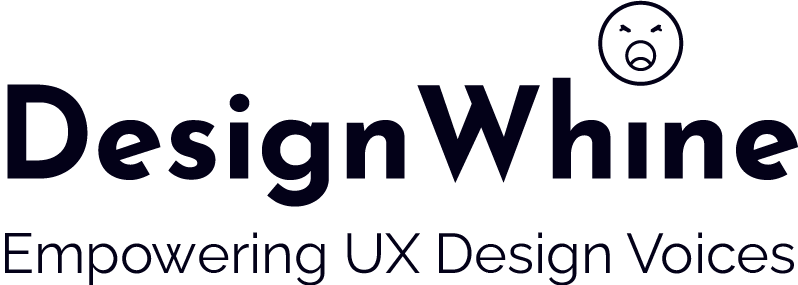The search for a connection between UX design and environment began a few months ago when we were looking to change the web host provider at DesignWhine. There’s a category of web hosts who label themselves as “Green Hosts” which got us intrigued. Like most of us, we really had no idea that surfing out the internet releases carbon emissions, to a level that might seem meager compared to other potential sources, but are quite significant.
The IT industry is one of several factors contributing to increased carbon emissions. It comprises everyone from UX designers to digital behemoths like Apple or Google, and it epitomizes the exact thing that has characterized the twenty-first century. It links every part of the world and, naturally, uses a lot of energy to run. An in-depth overview of this connection can be traced to “data” and the increasing necessity for us to communicate and receive information as quickly as possible. Every time we use data, whether it is to store it safely in cloud storage, browse social networking websites, get over a zoom call, or send an email to a friend, we set off a series of actions that require power (electricity) to complete. More demand for power implies more fossil fuel consumption, and thus more carbon emissions.
However, the good news is that we as UX designers can contribute to provide experiences that bring the energy consumption down to some level. And this is what Green UX is essentially all about.
We went ahead and chatted with Sebastian Mueller, a renowned advocate of the digital sustainability movement, on how crucial a UX designer’s job is in ensuring that the world’s carbon footprints are reduced.
“Design is vitally important for the sustainability of all products and systems, as most of the eventual carbon footprint is decided at the design stage. This is no different for digital products and services, where designers have high leverage over the eventual footprint of the resulting outcome. Ideally, designers would not only take responsibility for the impact of the eventual UI itself but also drive conversations around the business objectives and stakeholder context of the project, to find more opportunities to make the service more sustainable.”
Sebastian Mueller is of the opinion that every product or service is always embedded in many layers of context, such as the organization, the business model, and many more, all of which should be questioned and re-aligned with the ultimate goal of more sustainable outcomes in mind which is where UX designers could be helpful.
Tom Greenwood, co-founder of the London digital agency Wholegrain Digital, a Certified B Corp, and a specialist in web performance and sustainability, thinks that UX is very much “aligned with the goals of environmental sustainability, as it is focussed on making things easier and more efficient for the end user.”
Tom further says, “When we make things easier and more efficient, it is possible for digital services to meet people’s needs with less energy. It can be a win-win. UX designers therefore have a crucial role to play in a more sustainable future. That said, UX design can also be used to make it faster and easier to consume resources, whether that’s streaming more data on media platforms like Netflix or buying more consumer goods on ecommerce stores. So UX design must be approached mindfully to ensure that we optimize for the right outcomes.”
But when we think of UX design in the context of reducing energy consumption for digital interfaces, we run into a sort of a conundrum. What if, for example, a UX designer faces a dilemma of optimizing lengthy web forms by breaking them down into smaller steps to reduce cognitive load. That’s the most basic best practice that designers can adopt. However, doing so can potentially increase the number of clicks, screens, and thus, bandwidth consumption.
Tom Greenwood thinks working closely with the developers might solve this conundrum. He says, “This is a potential problem, although in this scenario there are potential solutions that would use very little additional data so long as the website and form are configured in the right way. The way to find the right balance therefore is for UX designers to work very closely with developers to explore the problems they are trying to solve and co-create solutions that are great for the user but also very energy efficient.”
While it might be possible for UX designers to get stakeholders talking about less energy consuming interfaces and advocate for them. What if the business objectives of organizations are fundamentally driven by energy consumption. For example, having lower-quality videos is one strategy for reducing energy consumption. However, we routinely see digital companies such as Netflix and Youtube upgrading the quality of their videos, with resolutions currently reaching up to 8k which significantly demands more energy consumption by devices these are watched on.
In Tom’s opinion, this is a genuine issue within the digital sector and he describes it with an analogy to the Jevon’s Paradox.
“We are to some extent trapped in Jevon’s Paradox, whereby increases in data and energy efficiency lead to us inventing new ways to consume more. We must therefore look at this challenge of digital sustainability not just as a technical challenge but as a cultural challenge. How do we change our social culture to be more mindful and selective about our use of digital technology, and how do we change our corporate culture to offer value to customers in ways that don’t always consume more resources? These are big questions that we are ignoring at our peril.”
Sebastian Mueller, on the other hand, has different questions to ask.
“Every product decision needs to be seen in the larger context where it exists and also in the second and third-order effects it produces. In this example, first of all in the core touchpoint, there should be several strategies such as the use of CDNs close to the user, capping the maximum resolution of what is streamed to what the screen can actually deliver against, smart buffering and interaction detection, to minimize loading content when no one is actually watching or engaging. Beyond that, the question would be – is an 8K resolution necessary? Would that enable a significantly better customer experience; which might entice more customers to stay home watching movies together, instead of taking transportation to a cinema to do the same? Where the latter would have a larger carbon impact than the streaming service. Point being – none of these questions are straightforward or very easy to answer. Context matters, and downstream implications matter. It is not just about weighing the immediate data transmission load and optimizing only for that.”
The discussions around the need for a greener interface, that could very well be driven by UX designers, would in-turn let consumers and business stakeholders ask pertinent questions like, do we really need an 8k resolution for our videos? Unless we have these discussions become part of every brainstorming session out there, we have a far far way to go. The necessary mindset and values transformation that is needed on the part of UX designers and, more importantly, business stakeholders to move closer to digital sustainability is imperative.
“First, people need to understand and embrace this as a relevant topic. Often IT and Digital are not the first places where organizations start their sustainability journey, yet they do have a significant impact. By some estimates, our global IT is the 7th largest energy consumer and is fast on rise, projected to be the 4th largest polluter by 2030 in some studies. So there is clearly a lot happening there which needs to be unpacked. Second, sustainability needs to be seen as a goal that should be on par with core commercial metrics. If the commercial aspects of a decision always win out, then there is no real discussion to be had. Every decision should be discussed from all perspectives, and sustainability is important enough to sometimes win out over some commercial considerations when the impact is large enough. Third, this is a learning journey. No one has this figured out today and there is no blueprint. Starting on the Green UX and Green Digital journey means learning, testing, iterating, and gradually improving our understanding to get better and better over time. This is an important long-term commitment, not a quick short-term fix,” says Sebastian Mueller when asked on what could instigate the shift in the mindsets of everyone involved in digital product design.
Tom Greenwood says, “We need a shift of mindset to focus on what truly matters to us as human beings and how we can support each other to live healthy and happy lives. The truth is that we each need very little in order to thrive, and we are often better off when we embrace a more minimalist approach to life. However, we live in a consumer culture where the aim of the game is to maximize consumption. Unless we change this at all levels, including design and business management, then we will always be avoiding the root causes of the challenges that we face, including climate change and the ecological crisis. The big challenge is how designers and business leaders can challenge this while living and working in a consumer society and economy. But all progress begins with a shift in mindset and a single step in the right direction.”









